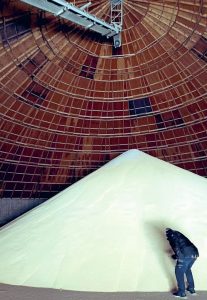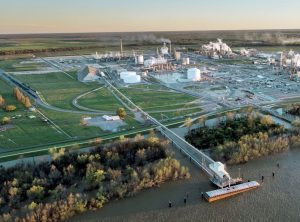
Sulphur fertilizers – the processes, the products
Mark Brouwer of UreaKnowHow.com reviews the main production options for incorporating sulphur into urea

Mark Brouwer of UreaKnowHow.com reviews the main production options for incorporating sulphur into urea

Green urea is urea based on green ammonia produced from renewable power via electrolysers and bio-based carbon dioxide and its colour is the same as normal urea. But in this round table discussion we discuss the possible causes for urea turning a green colour as found by the initiator of this discussion. We will learn that the colour of urea can be reddish or brownish in certain conditions where corrosion rates are high and/or oil fouling is high. But what can cause urea to turn green? n

In Part 3 of this series on stripper efficiency issues, we continue the discussion on some some of the many causes of lower stripper efficiency. Here we discuss liquid divider fouling and bad installation of liquid dividers.

Part 1 of this series on stripper efficiency issues provided a brief history of the CO₂ stripping process and discussed how the invention of the HP CO₂ scrubber back in the 1960s revolutionised urea technology. In part 2 we take a look at how high liquid load can affect stripper efficiency.

In 1967, Stamicarbon revolutionised the urea production process with the invention of the HP CO₂ stripper by Mr Petrus JC Kaasenbrood. At a time when there was an energy crisis in many parts of the world, the HP CO₂ stripper led to three main benefits:

Biuret is a chemical compound with the chemical formula HN(CONH₂)₂ , also known as carbamylurea. It is a commonly occurring undesirable impurity in urea-based fertilizers, as biuret is toxic to plants. Biuret is formed from urea, according to the following overall reaction:

Mark Brouwer and Jo Eijkenboom of ureaknowhow.com examine the major shifts in global urea production. They also discuss the future of the urea industry and, in particular, how the sector is being affected by the increasing focus on low-carbon ammonia production.

Every urea plant is also a water plant as the overall reaction starts with two molecules of ammonia and one molecule of carbon dioxide resulting in one molecule of urea and one molecule of water. Further water is added to the process via the steam ejectors in the evaporation section. All this water, which is contaminated with ammonia, carbon dioxide and urea plus possibly other contaminants like formaldehyde, methanol, oil, etc is collected in an ammonia water tank and then sent to a wastewater treatment section. The purpose of the wastewater treatment section is to reduce the ammonia, carbon dioxide and urea levels to acceptable levels. First the wastewater is treated in a first desorber column, where LP steam is used to strip off the ammonia and carbon dioxide, reducing the ammonia content from approx. 6-8 wt-% ammonia to approx. 1 wt-% ammonia. Nothing happens with urea in the first desorber as temperatures are too low to hydrolyse the urea back to ammonia and carbon dioxide. This takes place in the next step, in the hydrolyser, which can be quite a large counter current column operating with MP steam at approx. 23 bar (Stamicarbon design) or a horizontal deep hydrolyser operating at approx. 33 bar (Saipem design, refer to figure). Downstream of the hydrolyser there is another desorber column to strip off the remaining ammonia and carbon dioxide. Nowadays, boiler feed water quality can be realised by modern wastewater treatment. But at higher plant loads the operating margin in the wastewater treatment can become too small leading to higher ammonia and urea levels during certain operating conditions… n

Today some 75% of all urea plants worldwide operate a prilling tower as the solidification and finishing technology. A prilling tower is a large hollow concrete tower in which concentrated urea melt is sprayed from the top via a rotating bucket or static shower heads. The urea melt droplets cool and solidify while falling down some 70-100 m. The heat is removed by ambient air flowing upwards either as a natural draft due to the temperature increase or forced by means of air blowers.

It is common knowledge that wet CO₂ is corrosive to carbon steel and “dry” CO₂ is not corrosive to carbon steel. So typically engineers and contractors choose carbon steel for dry CO₂ conditions and stainless steels for wet CO₂ conditions. This can be seen in the CO₂ feed section of almost every older urea plant. But is it true that carbon steel is always the right choice for dry CO₂ and is dry CO₂ really dry under all circumstances?